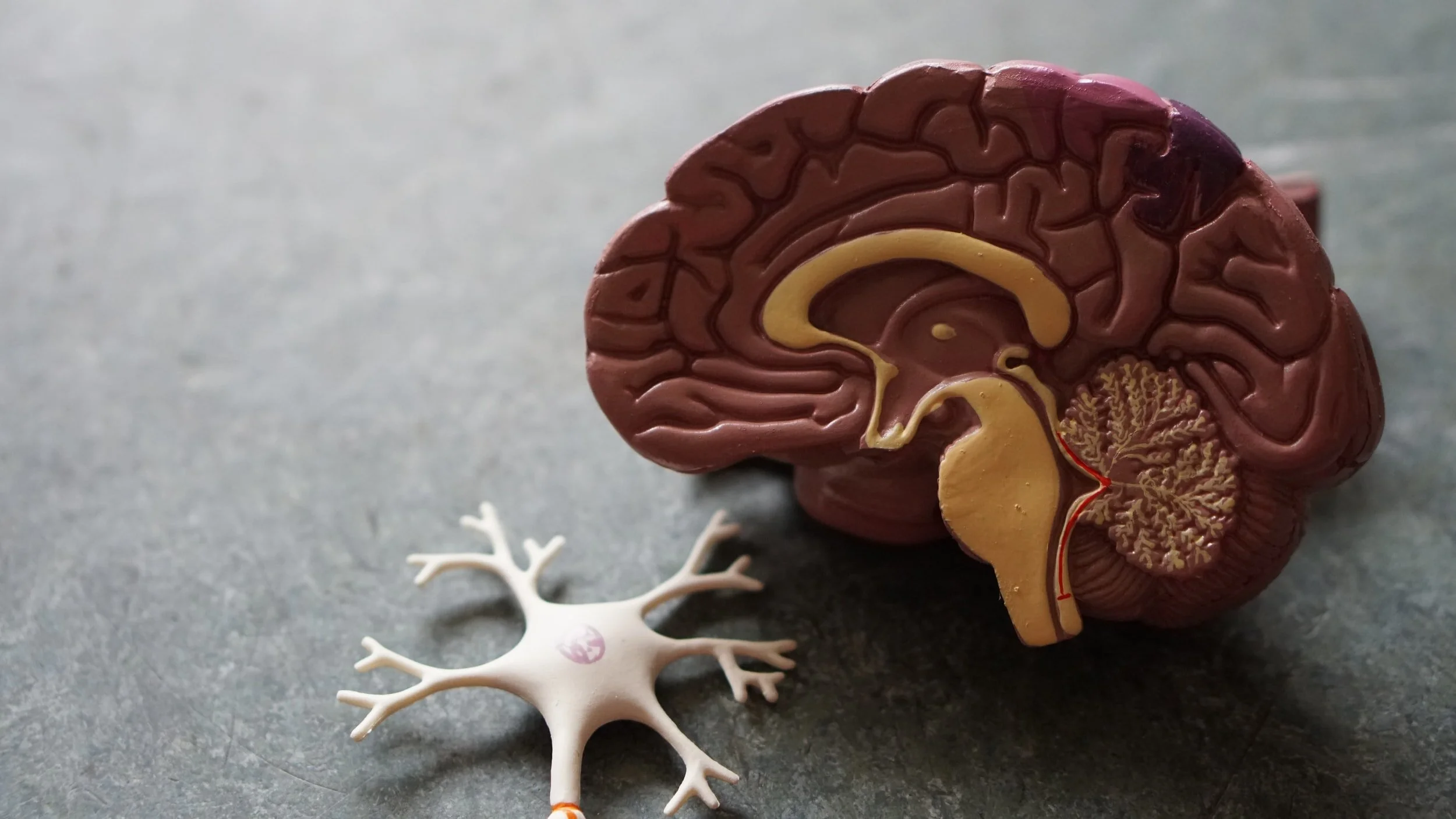Dark, bad, scary, negative, weird…whatever words you or your child use to describe intrusive thoughts, the effects are the same. Intrusive thoughts are like unwanted guests in our minds, barging in without being invited to spoil the party. While any child can have intrusive thoughts, they’re more common in children with anxiety, OCD, or a history of trauma. Keep reading to learn what you can do at home to help your child with the normal, common, but still very stressful phenomenon of intrusive thoughts.
Why Does My Child Have These Negative Thoughts?
If you’re curious to learn more about intrusive thought and why they happen, check out last month’s blog post. I break down what intrusive thoughts are in detail, with real-life examples. I also talk about what mental health problems might make kids more prone to experiencing them.
If you don’t have time to read the whole post, the gist is that intrusive thoughts are normal, and not always a problem. Many people—if not most people—will have intrusive thoughts at some point in their lives. They’re just one of the many weird things our brains and bodies do in an effort to keep us safe. When most of us have these seemingly random thoughts, we can shrug them off and quickly forget about them.
However, some kids are not so lucky. It can be harder for kids to distinguish between a useful thought and a useless one. This makes it more difficult to brush the thoughts aside. Instead, children may end up focusing on the thought and worrying about it. This leads to more anxiety, which increases the likelihood that these bothersome thoughts will pop up again.
An occasional intrusive thought is no problem, but kids with anxiety or OCD may get them so often that it feels debilitating. Children also sometimes experience these thoughts after a trauma as a part of PTSD.
How Can I Help My Child With Intrusive Thoughts?
There’s a lot you can do as a parent to support a child struggling with intrusive thoughts. You hold a powerful role in your child’s life. Your child looks to you as a guide to decide how she should think and feel about things, so your responses carry a lot of weight. By responding calmly and compassionately, you can help your child self-soothe and take the power away from overly dark or negative thoughts.
We’ll go over each of these in more depth in a minute, but here are 3 ways you can help:
Normalize intrusive thoughts for your child
Teach the difference between thinking and doing
Help your child name and accept intrusive thoughts
These steps can go a long way toward helping kids handle disturbing thoughts with less worry and stress. Next, let’s break down each one to see why it helps and how you can practice it at home.
Let Your Child Know Her “Bad Thoughts” Are Normal (and Not So Bad)
Intrusive thoughts can be disturbing, but they’re also really, really common. So common, in fact, that one study found that 94% of people experience them. They’re just a part of being human! As common as they are, we don’t tend to bring up intrusive thoughts during polite conversation. Because nobody ever talks about them, a child may assume she’s the only one who gets intrusive thoughts. The thoughts can become a big source of shame, especially because they might be about taboo subjects.
Things always feel scarier when we don’t understand them. Teaching children about intrusive thoughts takes away some of their power. When you tell children that many people have these bad thoughts and they aren’t alone, you alleviate their shame. Reducing fear and shame not only helps your child feel better; it can also reduce her intrusive thoughts over time.
Try explaining this to your child: “Our brains are always thinking, and always looking for ways to keep us safe.” Giving us these “bad thoughts” is sort of like the brain showing us a flashing danger sign. The only problem is, the brain isn’t always right! Sometimes, the more we try to ignore these bad thoughts, the more our brain pushes the thoughts back. These thoughts can be really weird, or scary, or even be about things we’d never want to do in real life. As weird as they seem, most people have them sometimes and they are totally normal.
Explain That Thinking Isn’t The Same as Doing
Have you ever knocked on wood to keep something bad from happening? Or worn your “lucky shirt” on game day to help your team win? If so, you’ve experienced magical thinking. Magical thinking is the belief that our private thoughts and behaviors influence what happens in the outside world.
Magical thinking is really common in children, especially younger kids. It’s usually most noticeable from the toddler years through about age 7. If you think back to your own childhood, you’ll probably discover magical thinking everywhere: cootie shots, lucky charms, and “step on a crack, break your mama’s back” are all examples of magical thinking that are fun for kids.
However, there can be a dark side to magical thinking, too. Children often believe that their thoughts can cause things to happen in the world around them. If a child worries their thoughts are responsible for something bad happening, this can cause terrible fear and guilt. It’s easy to imagine how a child who gets intrusive thoughts about violence or crime could begin to worry about accidentally hurting others.
Help your child understand that having bad thoughts does not make you a bad person. It’s our actions and choices—not our thoughts and feelings—that hep us to be “good people.” Next, reassure your child that thinking angry or scary thoughts about a person can’t hurt them or cause something bad to happen. Even if they feel bad to us, thoughts are not that powerful.
Shine Some Light on Dark Thoughts By Naming and Accepting Them
When I think about kids struggling with dark intrusive thoughts, a quote from famous psychiatrist Dan Siegel comes to mind: “Name it to tame it.” Dr. Siegel came up with this phrase, and it’s since been adopted by many therapists to describe a simple process that makes strong feelings more bearable.
“Name it to tame it” is exactly what it sounds like. Often, the simple act of labeling our thoughts and feelings as we have them can make them feel better. This is because naming something requires us to take a step back and go into observing mode, rather than being totally absorbed and overwhelmed by our feelings.
Naming intrusive thoughts as they happen can be a helpful reminder that we are not our thoughts. Thoughts come and go, but it’s up to us to decide how much attention they deserve. Calling out intrusive thoughts for what they are is also a helpful reminder that they are common and harmless: after all, they’ve happened to enough people that we’ve given them a name!
You can help your child practice saying one of these phrases (or something similar) the next time an intrusive thought strikes:
“My brain is giving me one of those garbage thoughts again.”
“I’m having an intrusive thought right now.”
“This seems like one of those thoughts I don’t need to listen to.”
Once the thought has been named, don’t dwell! We can just let the thought pass by. The more a child resists having intrusive thoughts, the more likely they are to pop up again. It may sound counterintuitive, but accepting intrusive thoughts can actually reduce how often they happen. By naming the dark thought and moving on, your child is teaching herself that they’re nothing to be afraid of.
Need More Help? Begin Child Therapy for Intrusive Thoughts in North Carolina
Sometimes, a child’s intrusive thoughts grow to be so big and overwhelming that at-home strategies aren’t enough to tame them. Maybe your child’s thoughts are part of a larger problem with anxiety or OCD. Sometimes, intrusive thoughts show up after a child experiences something traumatic or highly stressful. If your child’s intrusive thoughts are very frequent or very overwhelming, therapy can help sort things out.
Cognitive-behavioral therapy teaches children that they have more power than they might think over their thoughts and actions. They can learn to spot intrusive thoughts when they happen, and dismiss them rather than worrying about what they mean. Play therapy can also help younger kids work through anxiety and other feelings that are sometimes difficult to put into words. If your child survived a trauma, TF-CBT is a special, kid-friendly form of therapy designed to help children work through their symptoms in a safe way.
I’m a play and CBT therapist who specializes in helping kids with anxiety and trauma. I can work with families in three states: North Carolina, New York, and Florida. Children who live near my Davidson, NC child therapy office are welcome to stop by in person. If that’s not possible, no worries! I really enjoy online therapy and have found it to be just as helpful for many kids.
Ready to learn more? Drop me a line here. I’m always happy to hear from you.




